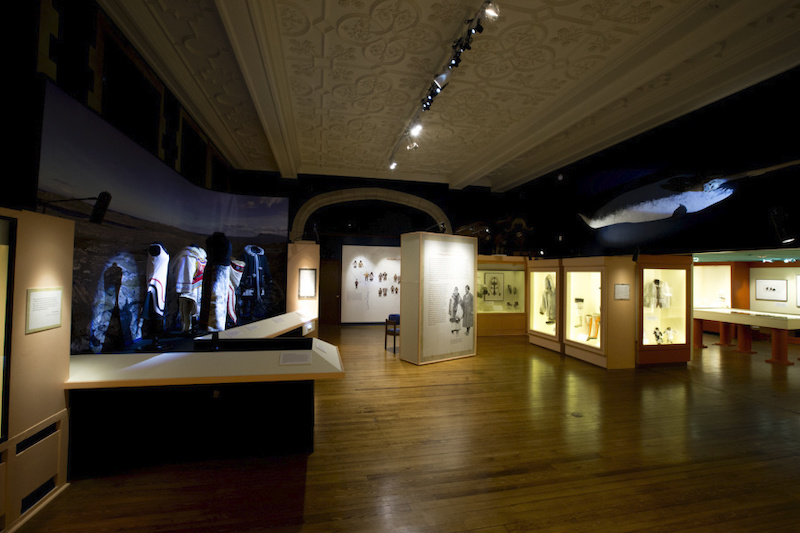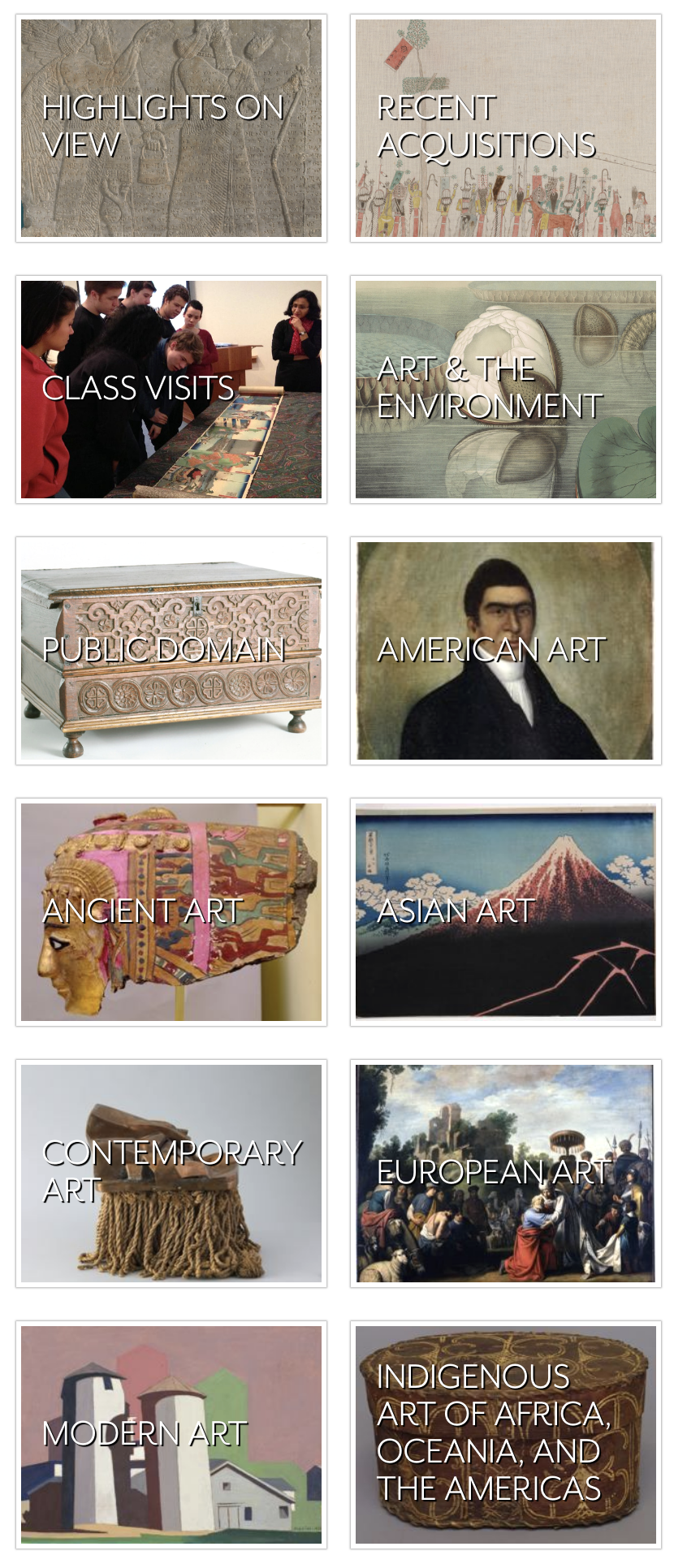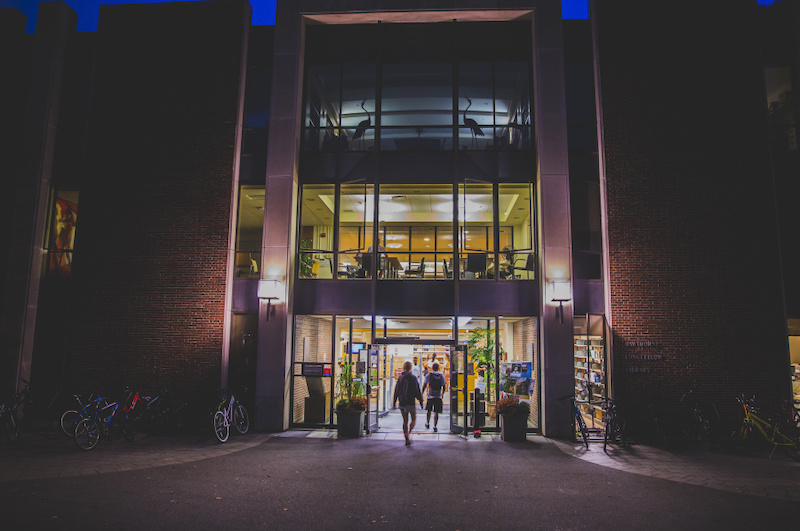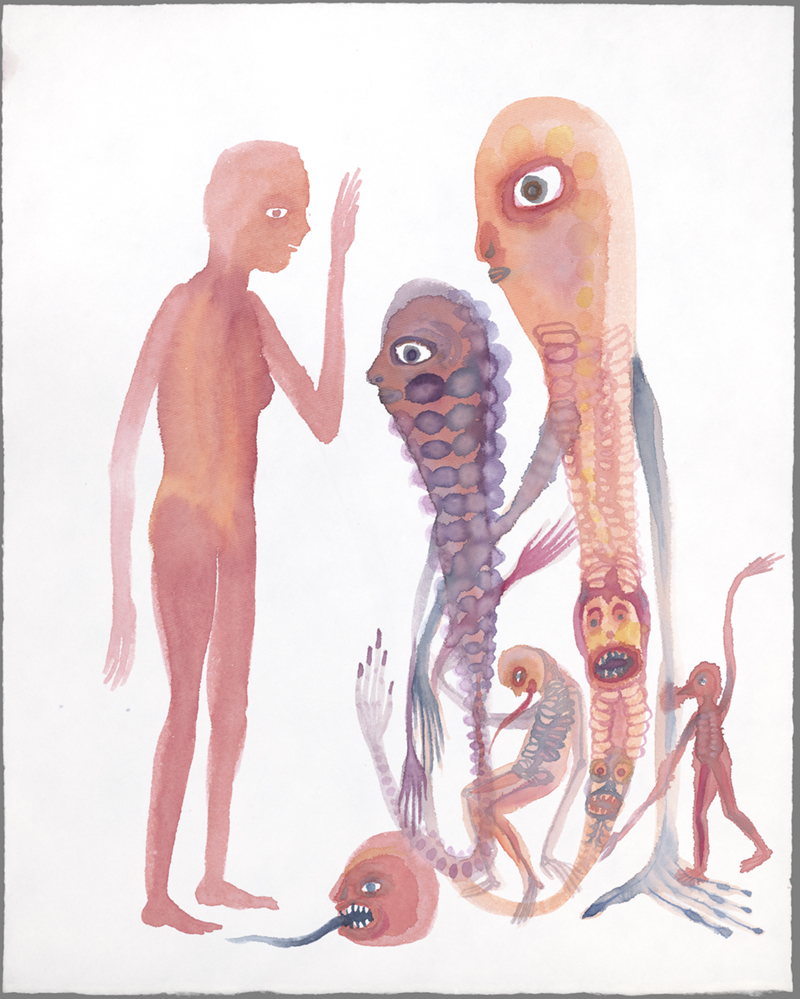During Shutdown, Bowdoin Museums and Special Collections Throw Open Their Online Doors
By Rebecca Goldfine
The Bowdoin College Museum of Art, the Peary-MacMillan Arctic Museum, and the George J. Mitchell Department of Special Collections & Archives in Hawthorne-Longfellow Library protect a vast trove of objects—and each semester they facilitate visits by classes and individuals to study, up close, items in their collections.
"Like the Arctic Museum and Special Collections, we are a place on campus that really emphasizes object-based learning," said Andrew W. Mellon Postdoctoral Curatorial Fellow Sean Burrus, who oversees educational outreach for the Museum of Art. "We take pride in the fact that we connect faculty and students to experiences of authentic, original objects in the building."
So, retooling how they operate in the era of COVID-19 is inherently a challenge—but one they've been in some ways preparing for years, and to which they've responded with creativity and a sense of public service.
While all three Bowdoin institutions clearly recognize the importance of in-person visits, they have long been involved in making their collections, exhibitions, and programming available online. The Art Museum has hosted an on-campus working group called ROAM—short for Really Open and Accessible Museums—that has met regularly since 2013.

The work ROAM has done has resulted in large, public collections that have become an important resource for faculty and students as Bowdoin's classes migrate online. Today, the vast majority of the Art Museum's nearly 30,000 objects all have corresponding online images and data. Roughly 6,000 of these objects have high-resolution images. Special Collections has more than 300,000 items available online. And 90 percent of the Arctic Museum's 45,000 objects—which includes 32,000 photographs—have been digitized.
Since the breakout of COVID-19 and the decision to move to remote learning at Bowdoin, the ROAM group has responded quickly to the new climate, Burrus said. "And it is really devoted to the concept of delivering on our promise to provide access to our collections for faculty and students."
ePackets for Classes
Before COVID-19 shut down Bowdoin, the Museum of Art had planned visits for dozens of classes after spring break. Students were expecting to look at a range of objects from Islamic ceramics to European paintings and decorative arts. So the first thing Burrus did, with the help of IT experts at Bowdoin, was to create robust "ePackets" for them.
"We have tried to provide expanded levels of access to our collections online," Burrus said. "Given that students can't visit in person right now, we've tried to create an online portal for each class where they can go and easily access the objects, along with any images we have of them, whether it's additional angles for 3D objects—looking at the top, bottom, and sides—or historical images."
Additionally, he said, the portfolios include "any bit of information we can provide to students that would be relevant to research they might do about the object," including every exhibition label that's been generated for them, exhibition histories, scholarly commentaries, and information from show catalogs.

Contributing to Public History
One of the first actions Marieke Van Der Steenhoven took after Bowdoin moved to remote learning was to create a resource site for thinking critically about digital collections and facsimiles and how to integrate them into classes. She is the education and outreach librarian for Special Collections.
She also reached out to the sixteen professors who had planned to use the archives in their courses to begin reimagining how digital materials—within Bowdoin’s collections and beyond—might best be leveraged.
"I wanted to offer faculty some options for re-envisioning a hands-on experience in the archives in an online environment," she wrote in an email. "There is a vast landscape of digital sources—facsimiles, metadata, and data—and there are so many creative ways for students to engage with sources and build their archival and visual literacy skills without physically being in the building.”
A gender, sexuality and women's studies class had been planning to scour the papers of Edith Sills, wife of Bowdoin's eighth president, who has a complicated legacy of feminism. In the original lesson plan, students would have encountered Edith's papers within the larger archive of her husband's and discussed the implications of that.
But then COVID-19 happened. And much of the material in Sills's archive is handwritten. So Digital Archivist Meagan Doyle and a student assistant spent two days during spring break scanning parts of the collection in advance of upcoming remote learning sessions.
While the Special Collections & Archives instruction program emphasizes the value of physical manuscripts, digital manuscripts do have some advantages: viewers can zoom in and, if the text has been transcribed, also do word or phrase searches.
Van Der Steenhoven suggested to the professor that her students take the next step and transcribe the newly digitized papers of Edith Sills collaboratively, on a shared platform. This way they would still get the chance to closely engage with the archival documents while also performing a public service.
"The resulting transcriptions will come back to the Archives where we will make them available to other researchers," Van Der Steenhoven said. "In essence, the students are helping us preserve her story and contributing to a larger public history."
The Peary-MacMillan Arctic Museum, which is supporting several classes with its online collections—including the transcribed journals of members of Robert Peary's 1908 Arctic exploration—is also using the hashtag Museum from home (#museumfromhome) to share its collections through social media.
Reaching Out across the World
The COVID-19 crisis has also made it more permissible, in a way, for museum and Special Collections educators at Bowdoin to reach out beyond their walls and incorporate the digital resources of museums across the world. So if another museum has online images in the public domain that complement works in the Bowdoin collection, the education team at the Bowdoin Art Museum will help faculty incorporate these resources into their lessons.

"That has been a real shift for me, as I've always focused on the collections and objects in the building," Burrus said. "Within a class visit focused on in-person engagement with original objects, I wouldn't normally bring in objects from the Met and the Getty, but when they are being encountered virtually," it makes more sense.
In response to the campus lockdown and the inability of students to access the Library archives, Van Der Steenhoven said she's been thinking more expansively about collections, well beyond Bowdoin's own databases.
"I’m looking much more broadly at how to create and source materials for instruction," she said. For instance, to address the needs of an upcoming class studying an artist’s book by Tana Kellner, she reached out to the artist to see if she’d be willing to make a video of herself interacting with the book. Kellner agreed. Once it is posted on the website of her studio, Women’s Studio Workshop, "the video will become a resource not only for Bowdoin students, but will be available for students across the globe who are interested in Kellner’s seminal work," Van Der Steenhoven added.
In addition to supporting online learning, Art Museum Co-director Anne Collins Goodyear has been contemplating the Museum's larger purpose and possibility in the midst of a global pandemic that is shutting down societies and making millions of people homebound.
"I think we [in the museum world] have been thinking for a while, up until now, that electronic resources are a supplement to the museum with walls," she said. "Now, we don't have museums with walls, in the sense that we're all closed to the public."
Beyond offering electronic versions of their collections, Goodyear thinks museums can offer new and innovative online public programming to audiences at home, some of whom may need the solace and sustance offered by art more than ever. She has already asked Artist Andrea Dezsö to "partner with the Art Museum to inaugurate a new stream of virtual programming exploring creative responses in the face of profound challenges," Goodyear said.
"She has important insights to offer regarding how one grapples with the uncertainty and pain of illness"— a subject addressed in her exhibition, The Visitors, now hanging at the Museum. Dezsö is Bowdoin's halley k harrisburg ’90 and Michael Rosenfeld Artist in Residence.
With society at a standstill, the current crisis "is helping us to think not just about how we're serving visitors in a time when they can't get into the Museum—that’s the negative paradigm of what we can't do—but rethinking the paradigm of how we serve visitors in this moment of cultural crisis, when we have extraordinary resources at our fingertips to connect the world with artists whose vision can inspire us," Goodyear continued.
"And that's what I think is really the promise of the museum and the digital era. It creates for us a radically new way of how we deliver culture to our community."